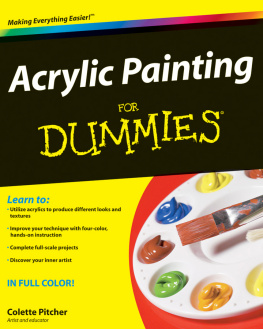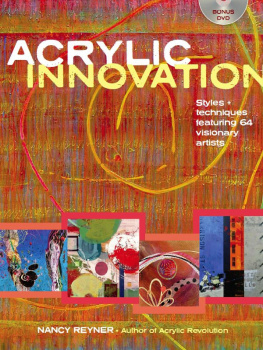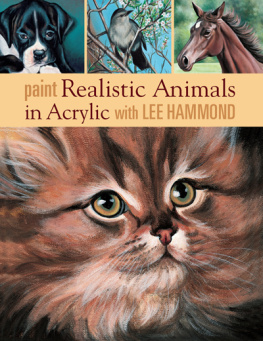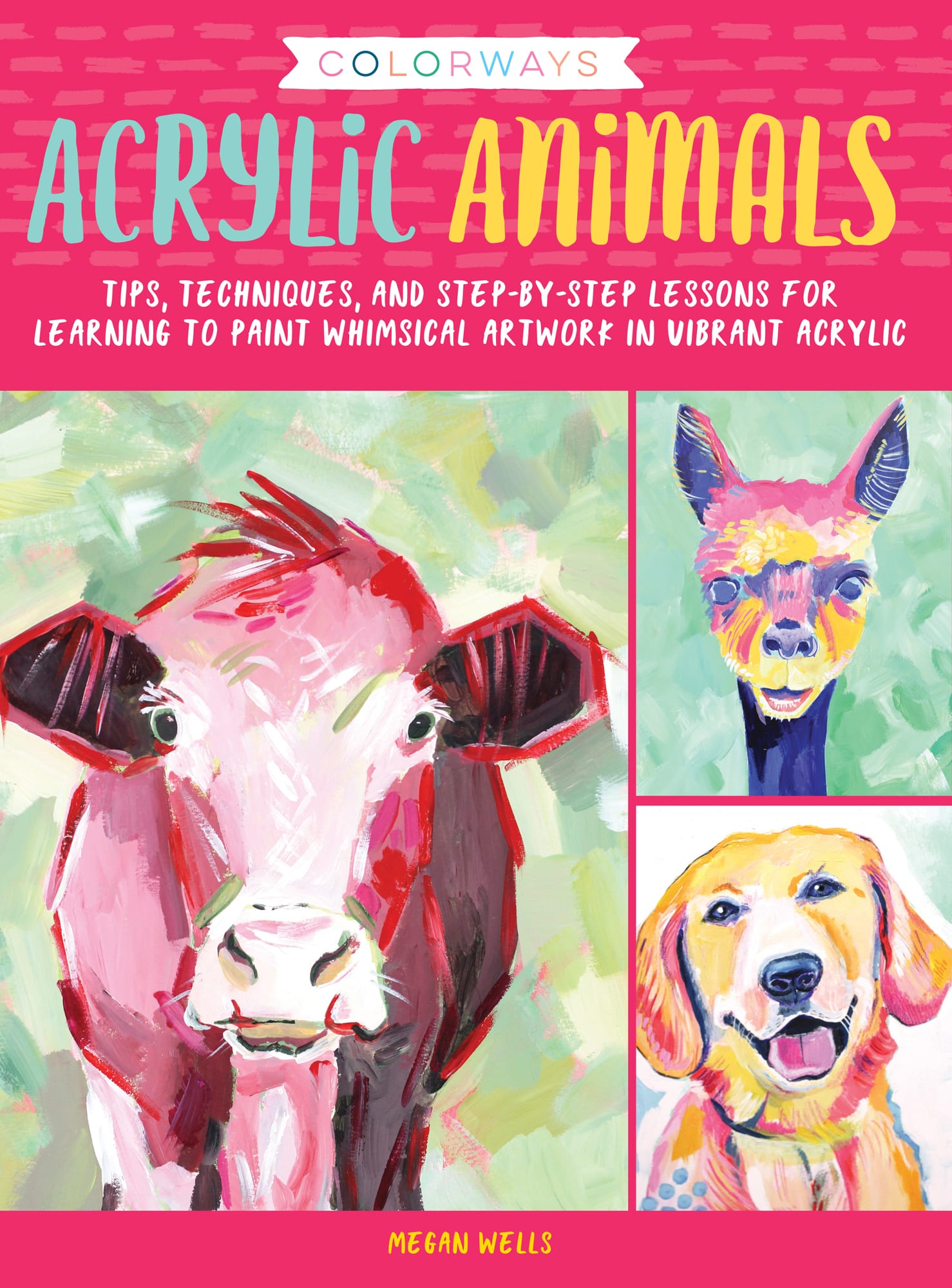COLORWAYS
Acrylic Animals
TIPS, TECHNIQUES, AND STEP-BY-STEP LESSONS FOR LEARNING TO PAINT WHIMSICAL ARTWORK IN VIBRANT ACRYLIC
MEGAN WELLS
Introduction
Animals are one of my favorite subjects to paint. Each creature has its own unique qualities: interesting shapes, feathers or fur, distinctive markings, and of course, various colors. With so many species and subspecies of animals, the well of inspiration never runs dry. And just as I enjoy painting animals, I love colorbold, expressive color that makes you look twice.
In Colorways: Acrylic Animals, youll find a variety of projects and easy-to-follow, step-by-step instructions covering a range of animals and color schemes. As you work through each project, I encourage you to focus on using color in expressive and whimsical ways instead of trying to capture a realistic image of each animal. There are no restrictions with color. As you work through each exercise, let go of any fear and just go for it!
At the beginning of this book, youll find helpful tips on sketching your subject matter, acrylic painting tools and techniques, and the basics of mixing color and color theory. Well talk about the importance of value and contrast, as well as using the intensity of each color to add depth and dimension.
The projects include gorgeous visual references, plus tips and tricks to use along the way. Feel free to use my sketches as the guidelines for your paintings, or create your own visual references from which to work. If you are not confident in your drawing skills, dont worry; Ill give you some helpful tips in .
Most of all, I hope you enjoy the process of creating and find yourself lost in a sea of color!
Tools & Materials
Lets begin by talking about what youll need to complete the projects in this bookstarting with, of course, paint!
ACRYLIC PAINT
Acrylic paint can range from inexpensive to break-the-bank pricey. Student-grade acrylics are more affordable, but they provide less coverage than professional-grade paints. I have found, unfortunately, that the more expensive a paint is, the better it performs. However, I always recommend starting with cheaper student-grade paints and working your way up to costlier professional-grade ones as your skills improve.
Acrylic paint also varies according to viscosity, or consistency. For instance, heavy-bodied paint is thicker and great for adding texture, while high-flow paint works well for details and line work.

Photo credit: Michelle VanTine
PAINT COLORS
There are so many colors of acrylic paint to choose from! To simplify your shopping process, Ive narrowed down your list to just 9 tubes of paint. With these 9 tubes, you can paint your way through the rainbow. Yes, you really can mix almost every color there is with these 9 tubes!
Photo credit: Michelle VanTine
9 Essential Colors
Titanium white
Black
Ultramarine blue
Phthalocyanine blue
Cadmium red
Quinacridone magenta
Cadmium yellow
Hansa yellow
Burnt umber
BRUSHES
For brushes, I recommend keeping it simple and selecting a few sizes of round brushes and a few sizes of flat brushes. I prefer synthetic bristles over natural ones, but I recommend trying both to see what you like best!
Photo credit: Michelle VanTine
PALETTE
A palette can be just about anything you have thats flat. If you choose to buy a palette, it can be made from plastic or porcelain. I tend to use a paper plate or some wax paper!
Photo credit: Michelle VanTine
PAINTING SURFACES
When working with acrylic, you can paint on just about any surface! To create the projects in this book, I worked on three different surfaces.
CANVAS: This is considered the standard painting surface. You can buy pre-stretched canvases at any art-supply store.
BRISTOL BOARD: This is unfinished paper board, and its great for many kinds of supplies. I often work on Bristol board when Im painting smaller pieces, as its easy to store and scan into the computer for reproduction, and its versatile. Its also easier to frame than a stretched canvas. Unlike canvas, however, Bristol board will bow if saturated with too much water.
WATERCOLOR PAPER: Just because its called watercolor doesnt mean it can only be used for watercolor paints! This type of paper comes either cold-pressed (textured) or hot-pressed (smooth). Its your preference! Try them both and see which you prefer.
PENCILS
Youll need a good-quality pencil for sketching. Drawing pencils range from very hard lead (labeled 9H) to very soft lead (9B). The harder the lead, the lighter your pencil will draw. When sketching your subject matter before painting, its best to draw lightly, so use harder lead.
MATTE GEL MEDIUM
Gel medium is very adhesive and makes a wonderful tool for collaging. Its also easy to work with and dries clear, so you can mix it with your acrylic paint to create transparent colors and even out texture.
MODELING PASTE
An acrylic medium thats filled with a solid material, modeling paste dries opaque white and can be used to add texture to artwork. Spread it on your canvas and paint over it once dry, or mix it with your paint and then apply to the surface. Because it is white, it will lighten the paint color.
PALETTE KNIFE
A palette knife is used for mixing colors. I usually mix colors with a brush, but for creating a large amount of color, a palette knife is a great tool to have on hand. It can also be used to apply paint to your surface, making it a wonderful tool for creating dimensional, textured pieces.
















